Gaia has put two photos on his flickr for an upcoming exhibit at Thinkspace with Rachel Lowing called The Uroboros Project. Their progress can be seen on the project blog.
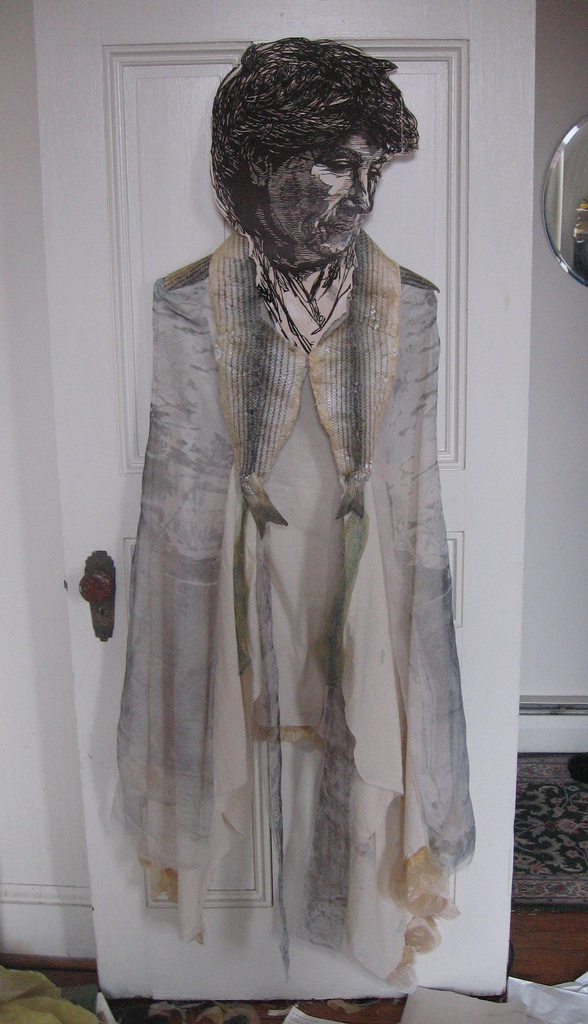
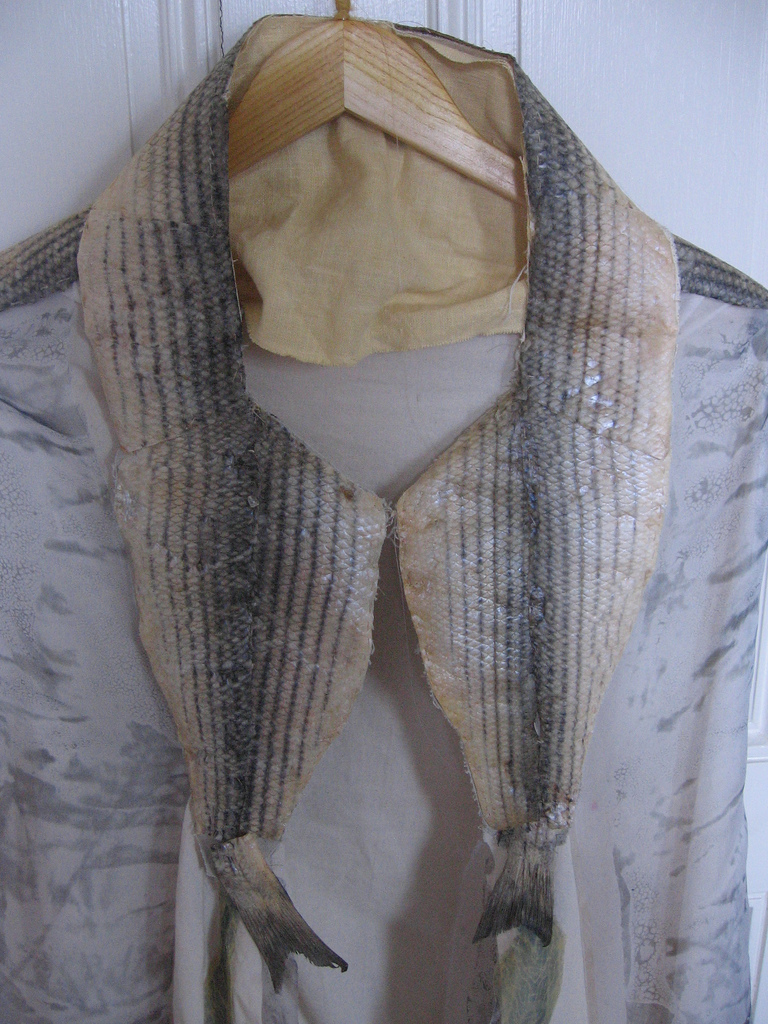
Gaia has put two photos on his flickr for an upcoming exhibit at Thinkspace with Rachel Lowing called The Uroboros Project. Their progress can be seen on the project blog.


Looks like Invader has been raising the bar lately with pieces made of QR code. If you haven’t seen it yet, watch JetSetGraffiti’s video interview with Invader below.
But what are QR codes?
The amazingness that is Wikipedia has a great article on the codes and their history.
From Wikipedia:
Although initially used for tracking parts in vehicle manufacturing, QR Codes are now used in a much broader context, including both commercial tracking applications and convenience-oriented applications aimed at mobile phone users (known as mobile tagging). QR Codes storing addresses and URLs may appear in magazines, on signs, buses, business cards or just about any object that users might need information about. Users with a camera phone equipped with the correct reader software can scan the image of the QR Code causing the phone’s browser to launch and redirect to the programmed URL. This act of linking from physical world objects is known as a hardlink or physical world hyperlinks. Users can also generate and print their own QR Code for others to scan and use by visiting one of several free QR Code generating sites.
As Invader mentions in the video, you can read QR codes from your iPhone. 2D Sense (formally known as iMatrix, the software Invader mentions) is free to download, but I couldn’t get it to work.
As cool as these QR codes are though, this “hardlink” technique experimented with before to little success. Unlike Invader’s usual mosaics, these QR codes are more of a secret invasion that won’t be understood by the average viewer. I think most people will prefer the normal mosaics.
Here’s a QR code I made online. Maybe you’ll have more luck decoding it than I’ve had:
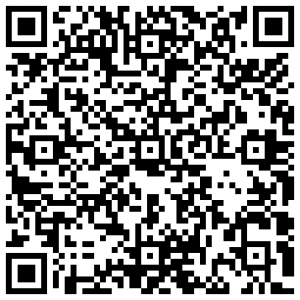
Update: Part Two is now online here.
This is the first in a series of interviews with directors/curators/whatever-they-wish-to-be-called of art galleries.
To start it all off, I’ve got Mike Snelle, the owner of The Black Rat Press. BRP is one of London’s premier galleries specializing in street art. In the past year, the gallery has shown work from Swoon, Blek le Rat, Nick Walker, D*face, and many others. Located in Shoreditch, behind Cargo and next two a few Banksy pieces, BRP is a must-visit gallery for any street art fan.
On a personal note, BRP was the first gallery I ever visited that sold street art, and I did a work experience there this summer. They are some of the most fun people I know in the art world, and I certainly wouldn’t have started Vandalog without their willingness to let me spend far too much time admiring their shows.
This is part one of a two part interview. I’ll post part two tomorrow.
RJ: What sets The Black Rat Press apart from other galleries?
Mike Snelle: I think galleries are similar to artists in that those that are most interesting have their own unique voice and do not imitate others. I feel that we are developing that here at Black Rat and hope to continue to do so next year. It’s partly a matter of not being dictated to by the marketplace and what’s hot at the moment. It is more valuable and interesting to work with artists that you believe in even when sometimes other people don’t get it. You hope as a gallery that over time people will come to share your belief in an artists work.
Continue reading “Gallery Profiles: Black Rat Press”
I’ve only just discovered Klone in the past week or two, but I’m loving his work. I see a bit of a Hera vibe, which isn’t to say he doesn’t have his own style. His trademark character is all around Tel Aviv, and his work is sold at the Legal Action Gallery.
Here are a few images off of Klone’s flickr:
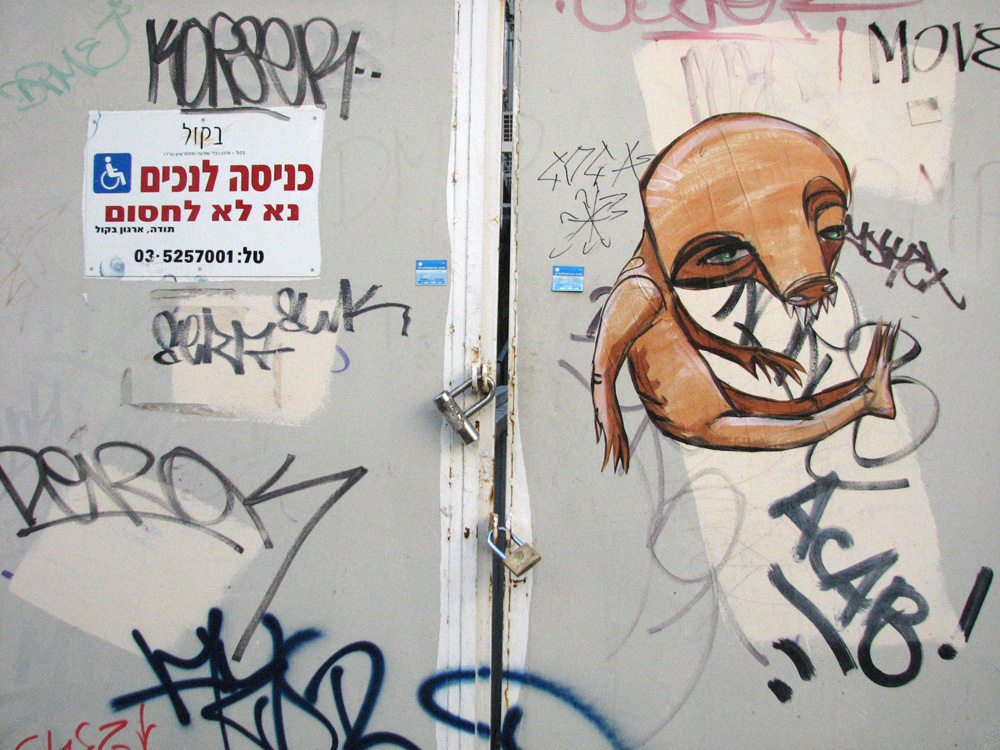

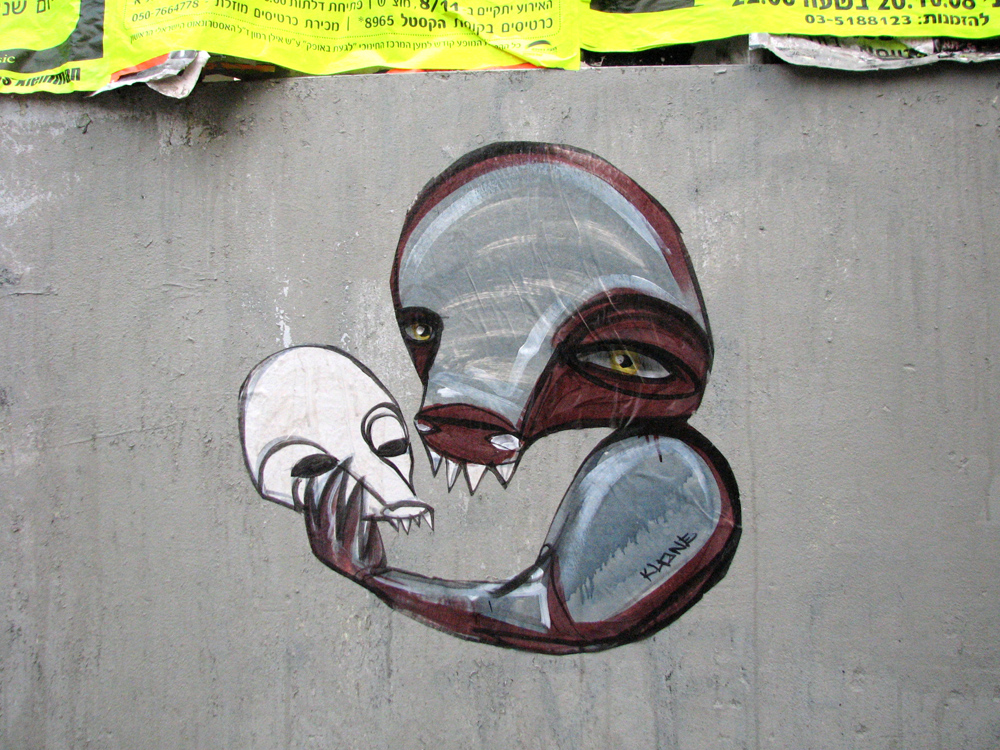
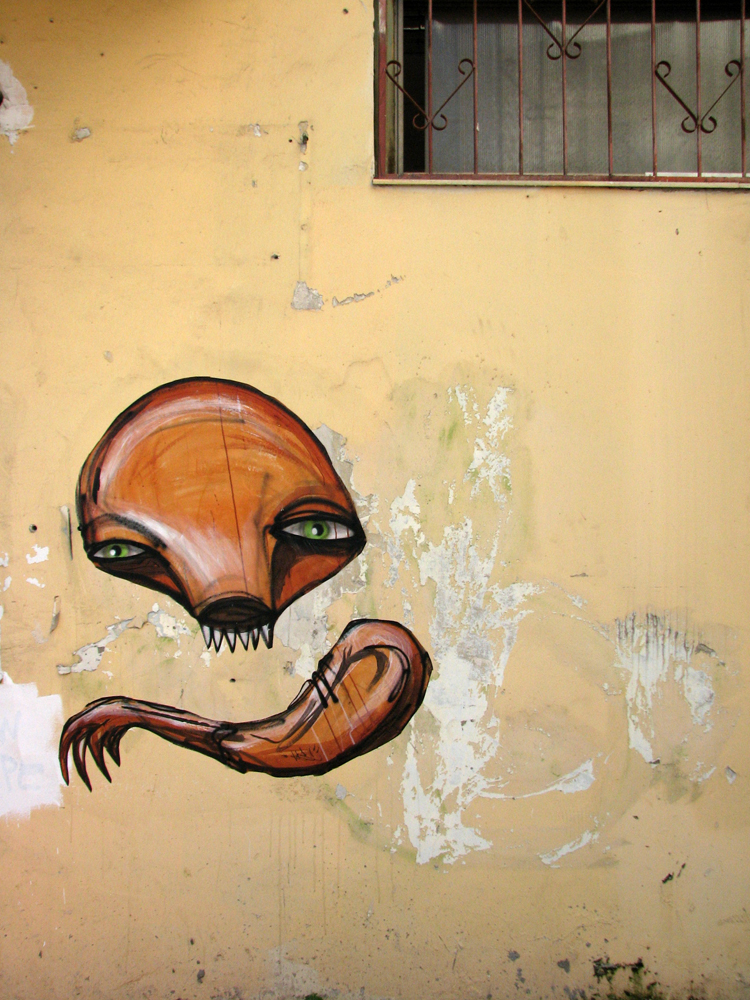
If you have have ever walked passed a piece by C215, you know how powerful they are. His stencils engage the viewer and transform their surroundings. Banksy may make great political stencils, and Logan Hicks has amazing technical skills, but C215 makes some of the most beautiful and moving stencils currently on the street.
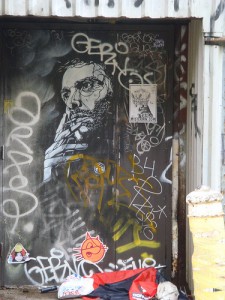
Most of his work is portraiture, but C215 also does scenes (such as the inside of a prison). Though C215 lives is Paris, his work has appeared around the world, from LA to Brazil to London. His flickr has over 1000 images (including from his recent trip to New Delhi), so be sure to have a look.
He recently exhibited at the Ink-d Gallery in Brighton, and has a book out called Stencil History X featuring interviews with many of the world’s top stencil artists.
Interview after the jump. Continue reading “Une Interview Avec C215”
This is the first in a series of two or three interviews just this week on Vandalog.com. To kick it all off, we put a few questions to American/Israeli artist Know Hope. Know Hope is originally from California, but now he lives in Tel Aviv. His work can be seen at thisislimbo.com. Most of Know Hope’s recent work includes his distinctive characters with a spindly figure and striped hoodie. Recently, Know Hope has exhibited at Urban Angel’s Corked show in London, and when this interview took place, his first solo show recently opened at Gallery Anno Domini in San Jose.

In a lot of your work, especially with the lanterns, it seems that its ephemeral nature is part of what makes it so special. What attracted you to making work for the street, and in particular, art that is so temporary?
The idea that everything is temporary fascinates me because of its presence and the thought of how something so timely can be timeless. With my work I often try to make that aspect almost physical, making the installations be active or complete only for a specific time frame. I think it creates an interesting dialogue in the sense that it makes for a more personal encounter or interaction. Time’s a funny thing, we’ll try to run from it on one hand and try to gather it on the other. And once were all bundled up in what we supposedly have, the moment has passed and it’s no longer relevant. But time does wait for no man, and we’re always so comforted by nostalgia without realizing that we’re creating our future memories, that same nostalgia in real time.

How would you describe the characters you paint?
I kind of see them as a visual manifestation of some certain struggle, some common denominator that ties us all together. Some sort of puppet or “personal icon” that is a culmination of things I’ve yet to get my head wrapped around. Awkward and stumbling, trying to do the best with what they’ve got.
Who are your favorite artists?
So it’ll be a mixture of all-timers and things that I’m really into at the moment: Raymond Pettibon was one of the first artists that I really liked, Chris Johanson, Swoon, Steve Powers (ESPO), The Polaroid Kidd, Thais Beltrame, William Schaff, Dr. Dog, Sam Cooke, Constantines, and everybody I’ve ever had a good conversation with.
How do you develop an image or series of images?
It usually starts with these “thinking sessions” I have before starting a project or just a new time in my head. They consist of listening to music and mainly writing almost associatively and slowly things take shape, same as for images, sketches become scenes and so on. A lot of times I will get ideas when I’m looking at something happen while adding my own soundtrack to it (i.e. watching people on the bus with headphones). A lot happens right when I’m about to completely fall asleep as well.

Do you usually put a lot of thought into where you are placing a piece before you do it? Is the location meant to serve as a blank canvas, or accentuate the painting?
It would be both. Some pieces are made specifically for a spot and some I have to look for a place that seems interesting. It depends what kind of a piece. The texture of the wall or the backdrop of the scene are things I tend to look at more and more recently. I believe that it is important for the piece to look good as part of the surroundings in which it is placed or made rather than focusing on the piece as a piece that stands as itself, because in the street, that is not the case. It’s about the whole.
You were one of the 15 artists featured at Nuart this year and worked with students at an art university there. What was that like?
I had a great time at Nuart and in Stavanger, Norway as a whole, as well. Working at the school basically was interesting for me as I’d never taught before, let alone actually been through proper art-school training. I didn’t start the 10 day session with any predetermined agenda, and it kind of just took an organic route, talking about random things:music, disappointment and habits etc…etc… And they all ended up coming up with some great projects in the end. The Nuart part was amazing, to be able to meet and hang out with so many people, and make art. It was kind of like a summer camp in a way. Good times.

And of course, are you featuring your work in any upcoming shows?
As I’m typing this I’m the morning after my first solo show at Gallery Anno Domini in San Jose, CA. I have a few shows lined up in the US next year, in New York in January at Ad Hoc Art, and June at The Carmichael Gallery in LA. There might be a few more things that will be taking shape in Europe, but some things still have to fall into place.